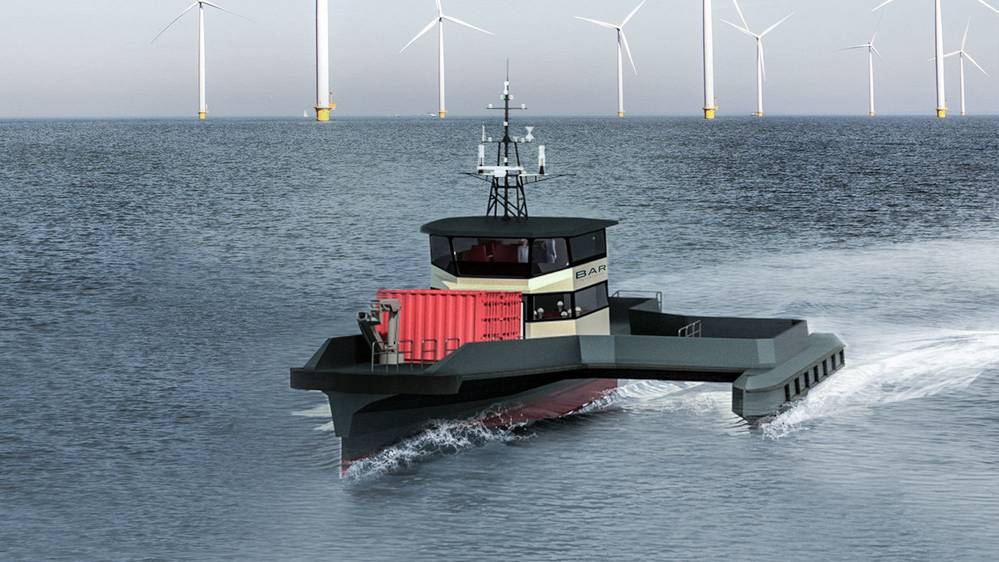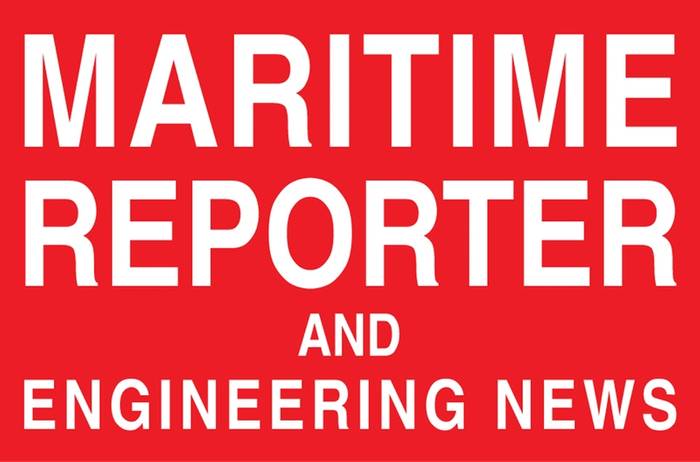Tech
Files
Winning the Next Event
How racing tech will set up U.S. offshore vessel operators for success
By John Cooper, CEO, BAR Technologies
It’s no secret that the U.S. offshore wind sector is finally about to burst into action after years of behind-the-scenes movement. With a new administration set to bolster the favorable political headwinds for the sector, establishing a strong domestic supply chain will be critical as the industry scales up.
Offshore wind farm operators will need high-quality vessels ready to go, and crew transfer vessels (CTVs) are vital when constructing and servicing new assets. Concurrently, the sector also has a once-in-a-generation opportunity to lay a strong foundation for future decarbonization, adopting next-generation CTVs as a matter of course.
Large operators and OEMs in Europe are increasingly scrutinizing the emissions of vessels in the offshore wind maritime supply chain, a trend expected to proliferate globally as the world reaches consensus on net-zero 2050. President Biden has previously spoken about making U.S. electricity production carbon-free by 2035, and the rapidly expanding U.S. offshore wind industry must ensure it isn’t caught off guard by short-term decision making in the next five years.
Ultimately, reducing emissions comes down to efficiency. Whether that is through reducing fuel requirements for conventional drivetrains, or enabling the transition to electric-hybrid propulsion by getting the most for a given energy quantum through having a more efficient hull, operators will need access to vessel designs which are optimized for energy use.
BAR Technologies has its roots in Formula One racing and the America’s Cup, where high-end simulation tools and AI design optimization are used to take every millisecond off finishing times. Workboats and CTVs might be somewhat different in terms of the required operational profiles, but a solid understanding of the latest hydrodynamics and foil assist technologies can be used to boost efficiency to new levels. Drawing on this heritage, BAR Technologies has patented its own invention, the Foil Optimized Stability System (FOSS).
What goes into designing a low-emissions U.S. CTV?
Offshore wind farm operators in the Atlantic face significant logistical challenges when servicing their assets. CTVs designed for the U.S. must be capable of operating in higher sea states than in many established European markets. The trend for building U.S. wind farms further out to sea also demands high efficiency to keep costs down.
The cornerstone of any vessel design is a hull form optimized for real-world operations. A particular consideration for offshore wind vessel operators in the U.S. is ensuring comfort for technicians in wave swells of up to 2.5 meters. The BARTech 30 CTV, which has already been priced at leading shipyards on the East Coast and in the South, makes use of an innovative slender main hull with a swath style outrigger, in contrast to the traditional catamaran.
This hull form, together with BAR Technologies’ FOSS, delivers significantly reduced vertical acceleration, long a priority for CTV operators. CTVs travel at high speeds, and, in rough seas, industrial personnel such as wind technicians can become seasick, ultimately having reduced effectiveness upon arrival. Maintaining a steady course reduces this, and also boosts the efficiency of the vessel. But, crucially, it ensures safe vessel operability in a wider range of sea conditions, allowing wind farms to be serviced for longer periods of the year.
Adapting foil technology for offshore wind vessels
In the America’s Cup, hydrofoil technology is used to lift racing yacht hulls out of the water entirely when the vessel is in motion, reducing drag significantly. Fully foiling CTV designs might one day enable the next wave of efficiency. However, the most effective solution for the present requirements of offshore wind vessel operators is the development of the FOSS.
FOSS consists of a foil array which can either be retrofitted onto existing vessels, or integrated onto new builds. On the BARTech 30, the FOSS is used to further improve efficiency, as the foils can take 30% of the displacement of the vessel, increasing high speed maneuverability. Vitally, this configuration also reduces fuel burn, and therefore CO2 emissions, by 30%.

FOSS can also be added to existing vessel designs to enhance maneuverability and seakeeping. For example, U.K.-based operator Seacat Services has ordered the popular Chartwell 24 model with the addition of BAR Technologies’ FOSS. As U.S. operators look to build out versatile fleets, it is likely that the new wave of vessels will share this core characteristic to maximize operational flexibility.
Finally, to get America’s CTV fleet on the water, innovative designs must first progress through regulatory approval from the class societies such as the American Bureau of Shipping. This is a vital step in ensuring that US operators can place orders for the designs which best suit their operational needs from shipyards across the country.
This is especially important where designs deviate from established convention. With foiling designs, for example, it was necessary to prove the robustness of components in the context of operating around a wind farm, where collisions may sometimes occur during transfer maneuvers in high sea states. BAR Technologies worked closely with ABS and achieved AIP in 2020.
The race to net-zero
The U.S. offshore wind industry is brimming with potential. But it can’t afford to lose sight of the end goal: clean, reliable, affordable energy for the rest of the century. Decisions made now on vessel procurement will underpin the future credibility—and profitability—of the sector. Wind farm operators will want to know that they are building a future-proof fleet. By acting decisively now to ingrain the highest standards into the maritime supply chain from the outset, they can be confident that the U.S. in 2050 will have the offshore wind sector that it needs.
John Cooper
John Cooper is CEO of BAR Technologies, a naval architecture and marine engineering firm based in the U.K.
